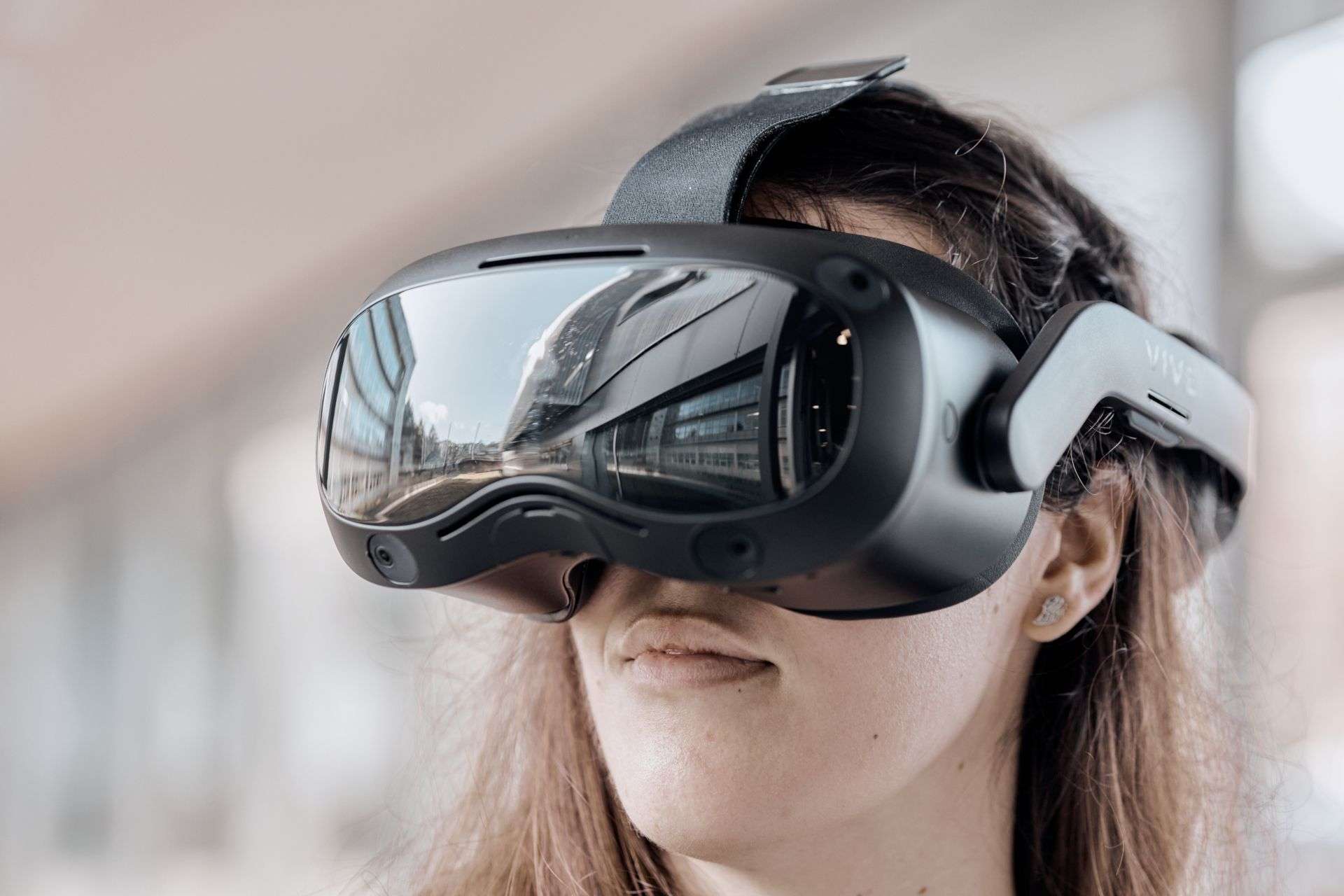
Virtual and augmented reality
Virtual Reality (VR) technologies combine real-time motion sensing and responsive computer graphics in order to provide immersive digital experiences.
VR systems embed participants in a three dimensional environment that is delivered to a digital display by a computer. While there are a wide range of different hardware setups used to achieve virtual reality immersion, all involve some form of head-mounted display which uses real-time motion sensors to track the position and orientation of the participant’s head. The computer graphics are responsive to the position of the user’s head, delivering perspective-matched images to each eye. In many cases, VR systems also include interactive hardware (e.g., handheld motion-tracked wands or data gloves) that enable the participant to effect changes within the virtual world. Compared to other forms of media, VR systems are distinguished by their ability to create for participants an illusory sense of being in a different place and an illusory sense of inhabiting in a different kind of reality.
VR has application across a wide range of different areas, including for example scientific visualisation, entertainment, health, training, etc.
Do you want to know more?
For collaborations, visits, etc. contact us.
Research Area
/research/areas/realidad-virtual-y-aumentada